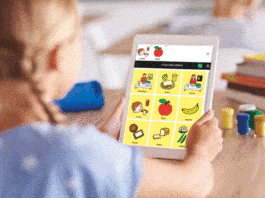CollabCAD is a great product for 3D Computer Aided Design (CAD) developed by the National Informatics Centre (NIC). What would it take for it to reach a global audience?
Printed circuit boards (PCBs) are the heart of any electronic device, ranging from toasters to smartphones. In 2015, CERN, the European Organisation for Nuclear Research, was looking for a software that would make it easier for electronics engineers to share their PCB designs. It chose KiCad, which is free and open source software (FOSS), and assigned its own experts to turn it into an efficient tool for designing open source hardware. Five years later, the results are spectacular. As of June 2020, over 850,000 free KiCad models could be downloaded on the search engine for electronic and industrial parts, called Octopart. This means that for every problem that you are trying to solve there are likely several similar models that you can download and use as is, or modify to suit your needs. The globally popular electronics hobbyist hardware vendors Raspberry Pi and Arduino have also donated to the CERN KiCad initiative.
Farsighted move by NIC to introduce CollabCAD to schools
CollabCAD 3D modelling software is an initiative of the National Informatics Centre (NIC, Department of Information Technology), Bhabha Atomic Research Centre (BARC) and Vikram Sarabhai Space Centre (VSSC). NIC has been developing this software for nearly two decades. In the last few years, the Centre has released it for use by Atal Tinkering Labs (ATLs), which is a part of the Atal Innovation Mission (AIM). In April 2020, AIM announced that it had selected about 15,000 schools spread across 33 different Indian states and union territories, for the establishment of ATLs. In addition, NIC is also making this software available to the CBSE Board for use by Class XI-XII students.
Importance of CAD software for STEM learning
STEM (science, technology, engineering and maths) curricula are typically steeped in traditional textbook methods. These don’t hold the interest of young students for long and there is no hands-on learning either. Modelling with 3D computer-aided design (CAD) software to design and print 3D products can significantly improve students’ spatial visualisation skills, creativity, and problem-solving skills. These are the very same skills that are essential for being successful in a STEM career.
Affordable 3D printers means students should be CAD savvy
If you want to 3D print something, you must first design it. The way to put the vision in your head onto printable media (in this case) is by using CAD software. The future of 3D design and manufacturing is very bright. Adding 3D printing projects into the school’s curriculum will prepare students to tap into this growing field. At a minimum, it will stimulate creativity, provide valid learning experiences and instill in the students invaluable practical skills that will create opportunities for them for many more years.
Built on top of open technology
CollabCAD is based on open technology. It is built on top of several free and open source software (FOSS), namely, Java 3D, Open Cascade, Jython and PostgreSQL/MySQL. It is developed on the Linux platform, and runs on Linux as well as Windows. However, some of the features, such as the finite element analysis module, are available only on Linux.
The software supports importing open formats like XML, STEP, IGES and VRML. However, if your customer gives you drawings in a proprietary format, you need to buy a convertor from Open Cascade. For what it is worth, the popular FOSS CAD software FreeCAD has also been struggling for years with licence issues in importing the popular proprietary DWG file format.
Better features and better documented
With a few exceptions, FOSS is notorious for poor documentation. The CollabCad User Guide, created by NIC, already far outshines any FOSS competitor in this area. Looks like NIC is planning to translate this user guide into Indian languages. That will be a game changer when it happens. The e-CollabCAD 3D Viewer is very convenient for viewing on the Web.
This is for visualisation and sharing of designs made in CollabCAD and several open 3D file formats. No software or plugin is required; the viewer works directly on WebGL-compliant Web browsers, which most modern Web browsers are. You can also share 3D models with public or private collaborative partners.
When you launch CollabCAD, you get the option to invoke it in standalone or client-server mode. The client-server mode is super useful for teamwork, which is likely where the name CollabCAD comes from. The versioning of the engineering drawings, which is a must-have feature for teamwork, is available through the PLM module.
NIC is on the right track as it is creating lighter versions
To say that CollabCAD is feature-packed will be an understatement. I downloaded the demo version sized 1.56GB, which is marked ‘For CAD Hobbyist/Professional’. While installing it, I got the option not to install PLM, Blender, ERP, VISViewer, and NCPostProcessor modules.
Even then it has the ability to do computer aided engineering (CAE) such as finite element method (FEM) and computer aided manufacturing (CAM) to support basic CNC (computer numerical control) operations.
It is understandable that BARC and VSSC need their CAD software to have enterprise grade features. However, for widespread adoption in schools, there is a need to make it lighter. Otherwise it risks becoming bloatware, because of the many unused features taking up excessive disk space and memory. NIC has recognised this and made a lighter version for ATL use and an even more trimmed one of size 243MB for CBSE use. However, it is not very helpful to bundle other open source software such as ERP and Blender with this. What may perhaps be more useful is to provide a way to integrate it with a popular ERP, such as the homegrown open source success story, ERPNext.
Why make it open source?
When MySQL open sourced its code, the company’s revenue initially dropped by 80 per cent. But eventually, MySQL went on to become so ubiquitous globally that Sun Microsystems was willing to pay a billion dollars for it saying, “Open source is a legitimate business model”. Open sourcing is one step that will dramatically grow the CollabCAD ecosystem. People who have gone through this difficult decision have discovered that more than contributions to source code, open sourcing is the best product marketing strategy. Open source companies do not need to spend much time or money promoting the product or figuring out customer needs. This frees up more resources to be spent on their core strength, namely, product development.
Once you give away your code, who will want to pay?
CollabCAD already has distributors in India to provide marketing, support and training services. Open sourcing will increase visibility and open up a larger market for distributors. In addition, open source giants including Red Hat and Magento offer a variety of certification options. This is another untapped revenue opportunity for CollabCAD. The e-book can also be sold to a much larger audience base. There will always be a group of users who will download the community version and depend wholly on community support. But they will also contribute to the product’s strength by actively providing user-to-user support and generating valuable feature suggestions. However, serious businesses will be glad to pay because they will need the peace of mind that comes only with assured support.
MySQL has a dual licensing model, which is a good fit for a product that needs to be embedded in other proprietary licensed products. However, this is not a suitable model for a product like CollabCAD. When Magento Commerce (on-premises) was introduced, it had the same core source as the Magento Community Edition but was designed for large businesses that require technical support for installation, usage, configuration and troubleshooting. This is a more appropriate model to consider for CollabCAD.
Won’t NIC lose control by open sourcing?
NIC will still retain control by owning the brand as well as keeping commit rights to the code base within its own core team. This way it can harness the energy of the very large developer pool to maintain and improve the code as well as support users. In addition, NIC will, of course, continue to own the official documentation and certification programs as well as control the support ecosystem of distributors, training and other partners.
Open sourcing will make CollabCAD a world leader
When Adobe acquired the company that developed the mobile application development framework PhoneGap, the CEO of the company said this about why it open sourced it, “You’ll be blown away by how much better your code gets and how much more quickly you can reach a broader audience.” So if reaching a broader audience is the name of the game, open sourcing is the best way to play it!




